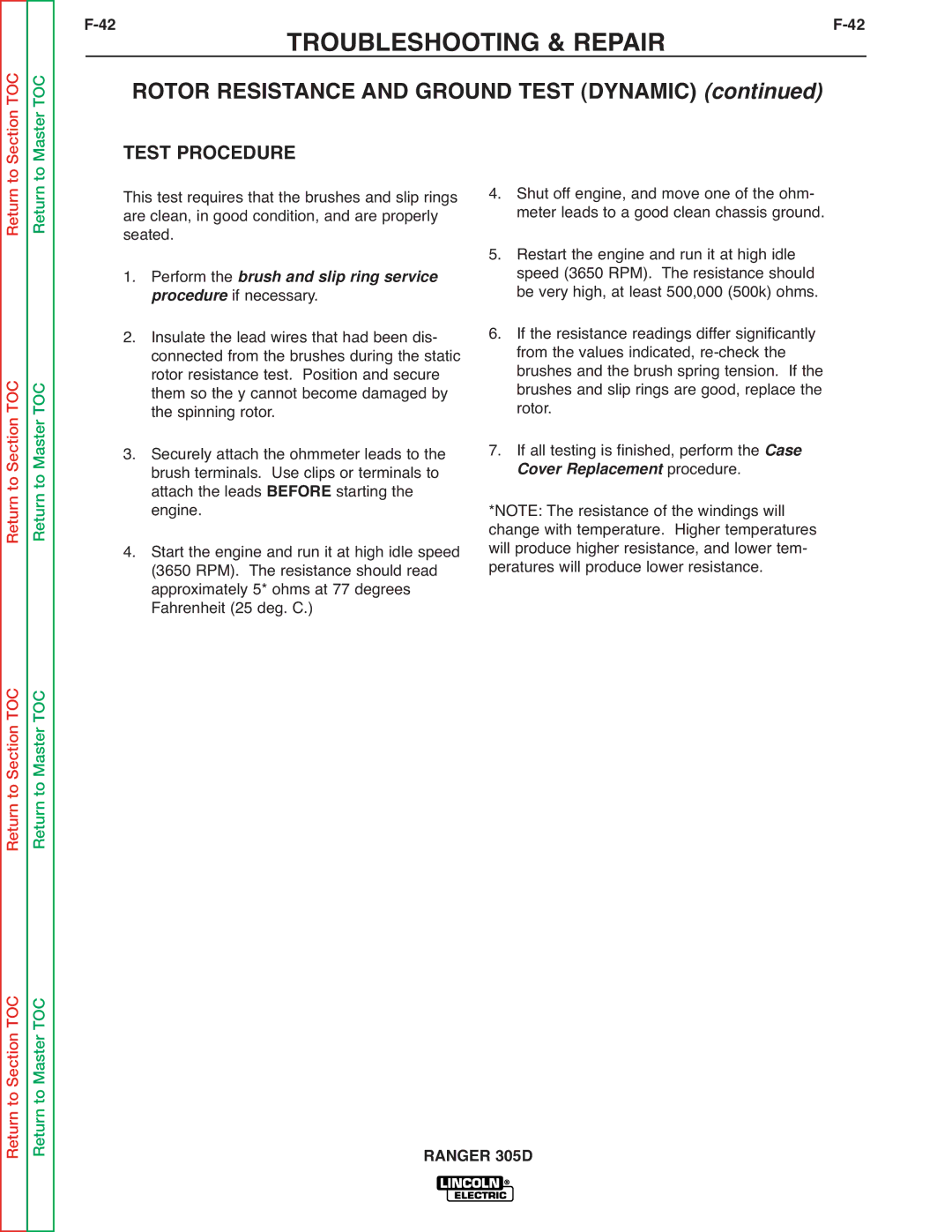
TOC
TOC
TROUBLESHOOTING & REPAIR | |||
|
| ROTOR RESISTANCE AND GROUND TEST (DYNAMIC) (continued) |
|
Return to Section
Return to Section TOC
Return to Section TOC
Return to Master
Return to Master TOC
Return to Master TOC
TEST PROCEDURE
This test requires that the brushes and slip rings are clean, in good condition, and are properly seated.
1.Perform theifbrushnecessaryand.slip ring service procedure
2.Insulate the lead wires that had been dis- connected from the brushes during the static rotor resistance test. Position and secure them so the y cannot become damaged by the spinning rotor.
3.Securely attach the ohmmeter leads to the brush terminals. Use clips or terminals to attach the leads BEFORE starting the engine.
4.Start the engine and run it at high idle speed (3650 RPM). The resistance should read approximately 5* ohms at 77 degrees Fahrenheit (25 deg. C.)
4.Shut off engine, and move one of the ohm- meter leads to a good clean chassis ground.
5.Restart the engine and run it at high idle speed (3650 RPM). The resistance should be very high, at least 500,000 (500k) ohms.
6.If the resistance readings differ significantly from the values indicated,
7.If all testing is finished, perform the Cover Replacement procedure. Case
*NOTE: The resistance of the windings will change with temperature. Higher temperatures will produce higher resistance, and lower tem- peratures will produce lower resistance.
Return to Section TOC
Return to Master TOC
